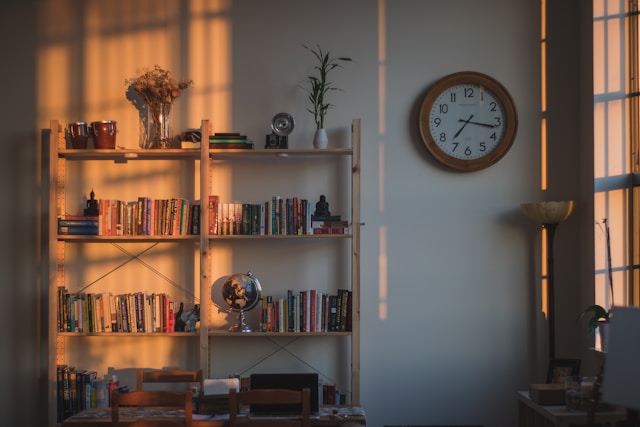If you’ve ever struggled to find the perfect bookshelf—one that’s the right size, color, and style—why not build one yourself? Learning how to build a bookshelf from scratch is a rewarding DIY project that not only saves you money but also gives you total control over the final look and feel of your space.
Whether you’re a seasoned DIYer or trying your hand at woodworking for the first time, this DIY bookshelf tutorial will guide you through the entire process from planning and cutting to finishing and customizing. Let’s get started!
Why Build Your Own Bookshelf?
Building a bookshelf from scratch offers several benefits:
-
Custom sizing: Make it fit your space perfectly, whether it’s a narrow nook or a full wall.
-
Budget-friendly: Materials can be more affordable than pre-made options.
-
Creative control: Choose your preferred wood, color, and design features.
-
Skill-building: A simple bookshelf is an excellent project for learning woodworking basics.
Step 1: Plan Your Bookshelf
Before buying any materials, decide what kind of bookshelf you want to build. Ask yourself:
-
How tall and wide should it be?
-
How many shelves do you need?
-
Will it hold books only, or also decor and storage bins?
-
Will it stand alone or be built into a wall?
Sketch your design or use free design software like SketchUp to map it out. Simple rectangular designs are ideal for beginners, but you can always add stylish features later.
Step 2: Gather Tools and Materials
To follow this DIY bookshelf tutorial, you’ll need a few basic tools and supplies. Here’s a standard list for building a bookshelf from scratch:
Materials:
-
Plywood or solid wood (for shelves and sides)
-
Wood screws
-
Wood glue
-
Sandpaper (80 to 220 grit)
-
Wood filler (for smoothing nail holes)
-
Paint, stain, or sealant (your choice of finish)
Tools:
-
Circular saw or table saw
-
Drill and bits
-
Measuring tape
-
Carpenter’s square
-
Clamps
-
Level
-
Safety gear (goggles, ear protection, gloves)
Optional: nail gun, wood filler knife, and finishing sander
Step 3: Measure and Cut the Wood
Measure twice, cut once. Use your design plan to mark your boards clearly. If you’re using plywood, a circular saw with a guide rail or a table saw will give you straight, clean cuts.
Cut the following pieces (for a standard five-shelf unit):
-
2 side panels
-
5 shelves
-
1 top panel
-
1 back panel (optional for added stability)
Tip: Label your pieces as you cut them to stay organized.
Step 4: Assemble the Frame
Start by attaching the top and bottom panels to the side panels to create a rectangular frame.
-
Apply wood glue to the joints.
-
Use clamps to hold the panels in place.
-
Drill pilot holes to prevent splitting the wood.
-
Drive in the wood screws to secure.
Double-check for squareness using a carpenter’s square before tightening fully.
Step 5: Install the Shelves
Next, it’s time to install your shelves. You can make them fixed or adjustable.
For fixed shelves:
-
Measure and mark shelf placement on both sides.
-
Use a level to ensure they’re straight.
-
Attach with glue and screws.
For adjustable shelves:
-
Drill evenly spaced holes and use shelf pins.
-
This allows you to move shelves up or down as needed.
Pro tip: Use a shelf pin jig for evenly spaced and aligned holes.
Step 6: Sand and Finish
Sanding is key to a polished final product. Start with 80-grit sandpaper and work your way to 220-grit for a smooth finish.
-
Fill any gaps or screw holes with wood filler.
-
Sand all surfaces thoroughly.
-
Wipe off dust with a tack cloth before applying your finish.
Finishing Options:
-
Stain for a natural wood look.
-
Paint for bold color and modern style.
-
Clear sealant for durability and a minimalist finish.
Let your finish dry completely before moving or loading the bookshelf.
Step 7: Add Custom Touches
One of the best parts of building your own furniture is adding personalized features:
-
Trim and molding can add elegance.
-
Casters or legs offer mobility and height variation.
-
Decorative cutouts or routed edges bring style.
-
Back panel with wallpaper adds a pop of design.
Custom bookshelf design ideas are endless—just make sure any additions don’t interfere with structural integrity.
Safety Tips
When working on any woodworking project, safety comes first:
-
Always wear protective eyewear and hearing protection.
-
Keep your work area clean and clutter-free.
-
Never rush through cuts or assembly.
-
Follow the manufacturer’s guidelines for all tools and finishes.
Final Thoughts:
Building a bookshelf from scratch may seem intimidating at first, but with the right guidance and a little patience, it’s completely doable even for beginners. This DIY bookshelf tutorial proves that with simple tools and clear instructions, you can create something beautiful and lasting with your own two hands.









